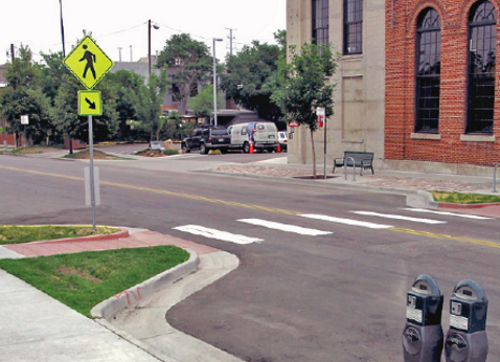FEDERAL ACTION
House Appropriations Releases USDOT Funding Bill – AASHTO Journal
Transportation Stakeholders Renew Calls for Congressional Action – Transport Topics
Congress returns to face big to-do list – infrastructure, social spending, debt limit – MarketWatch
Senate Budget Has Funds To Ensure Infrastructure Works As The Climate Changes – NPR
Rep. Ocasio-Cortez: Progressives May Sink Bipartisan Infrastructure Bill Without Reconciliation Deal – Democracy Now
COVID-19
Transit systems dangle discounts, new tech as they try to turn the corner on the pandemic – NBC News
Clarence Thomas rejects appeal to halt federal mask mandate on public transportation – Fox News
CDC defends U.S. transit mask mandate as some call for scrapping – Reuters
Transportation Agencies Grapple With Lasting Effects of Telework – Route Fifty
INFRASTRUCTURE RESILIENCE AND SUSTAINABILITY
New York Issues $110M to Support Local Transportation – AASHTO Journal
Identifying Communities ‘Most at Risk’ During Evacuations – AASHTO Journal
Senator Collins & Maine DOT Commissioner Van Note Survey Two Planned Infrastructure Projects in Searsport – Senator Susan Collins (Media release)
AIR QUALITY
USDOT, power sector seen as partners in creating infrastructure for net-zero economy – DailyEnergyInsider
“Ambitious” plan to reduce emissions at Pacific Northwest ports open for public comment – KING-TV
Transportation innovations could boost public health – Cornell University (Media release)
ENVIRONMENTAL JUSTICE
How Local Governments Can Spend Their Federal Funds To Boost Equity – Route Fifty
Congressional plan would reconnect neighborhoods like Philly’s Chinatown, fractured by highways – Philadelphia Inquirer
Maine joins debate over how to define environmental justice – Energy News Network
PennDOT Releases Transportation Equity Report, Highlights Efforts to Dismantle Systemic Racism and Inequity in Transportation – PennDOT (Media release)
NATURAL RESOURCES
The Challenges with Enforcing the Clean Water Act and Monitoring Pollution – GAO (Podcast)
EU Plans to Plant Three Billion Trees Under Forestry Strategy – Bloomberg Green
Company, Wisconsin Airport at Odds Over Proposed Trash Facility; Birds, FAA Certificate Among Concerns – WXPR Radio
A concrete solution to fish passage barriers – WSDOT (Media release)
CULTURAL RESOURCES
Ohio DOT Unveils Quaker Heritage Scenic Byway – AASHTO Journal
In Metcalfe Park, organizers use murals to build community — and slow traffic – Milwaukee Journal Sentinel
HEALTH AND HUMAN ENVIRONMENT/ACTIVE TRANSPORTATION
Pilot Seeks Better Micromobility Safety at Intersections – AASHTO Journal
Will Ohio DOT’s New Walking and Biking Plan Make a Difference? – Columbus Underground
After 5-year wait, bike racks finally being installed in Ventnor and Margate, New Jersey – Downbeach
Drivesmart column: Where do non-traditional ‘vehicles’ fit in on the roads? – Cowichan Valley Citizen (Opinion)
Union County, NJ to be Awarded Grant for Cranford-Elizabeth Rails to Trails Feasibility Study – County of Union (Media release)
TRB RESOURCES/ANNOUNCEMENTS
TRB Webinar: Public Transit as a Climate Solution – TRB
Infrastructure for a Changing Climate – National Academies
Report Outlines How Public Transit Agencies Can Advance Equity – University of Texas at Austin
FEDERAL REGISTER NOTICES
Port Access Route Study: Northern New York Bight – Coast Guard (Notice of availability of draft report and public meeting; request for comments)
Removal of the Federal Reformulated Gasoline Program From the Southern Maine Area – EPA (Notification of final action on petition)
Proposed Consent Decree, Clean Air Act Citizen Suit – EPA (Notice of proposed consent decree; request for public comment)
St. Croix National Scenic Riverway, Bicycling – National Park Service (Proposed rule)


